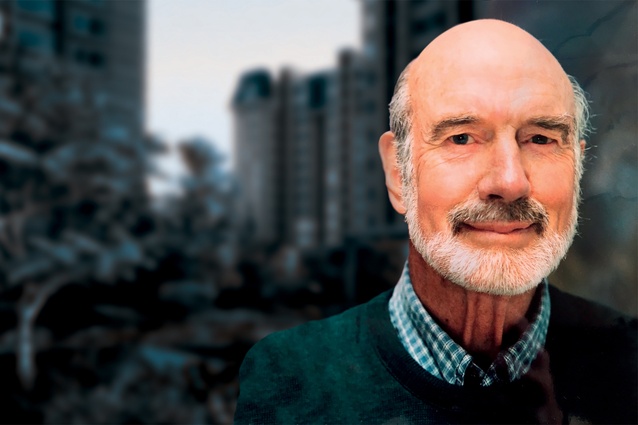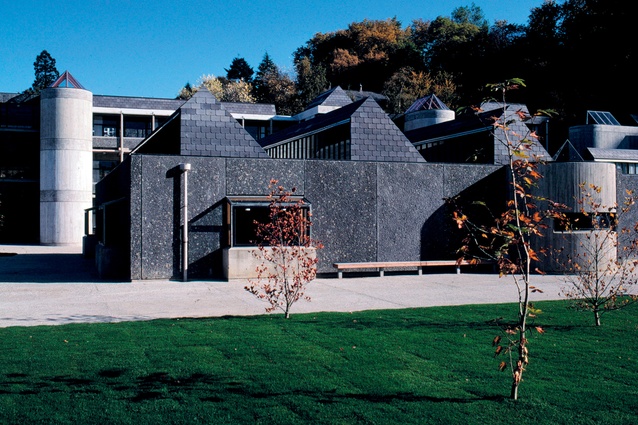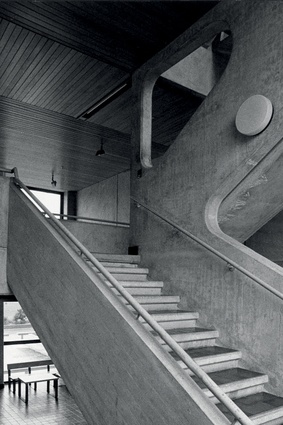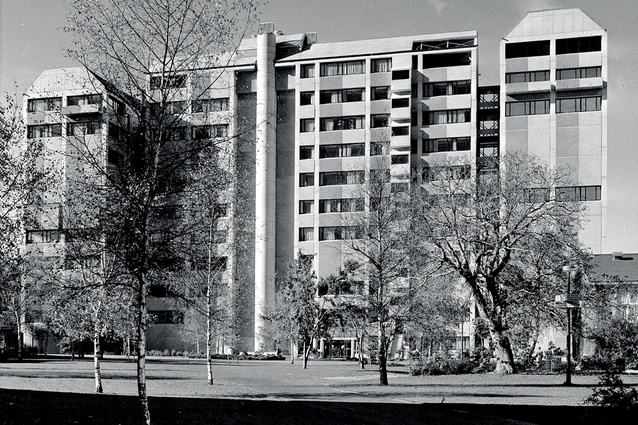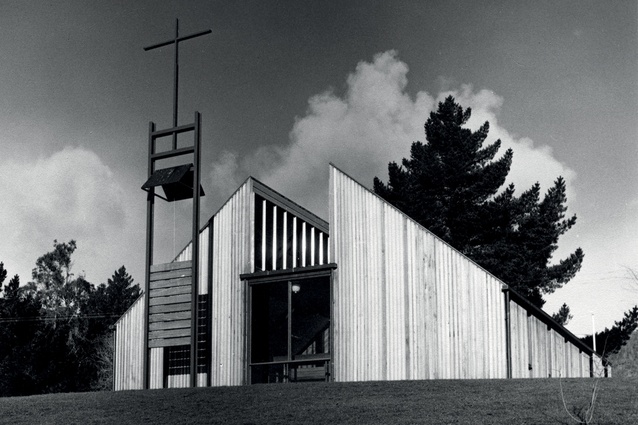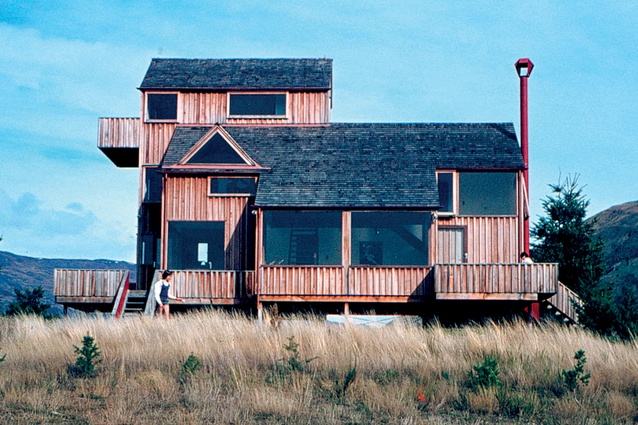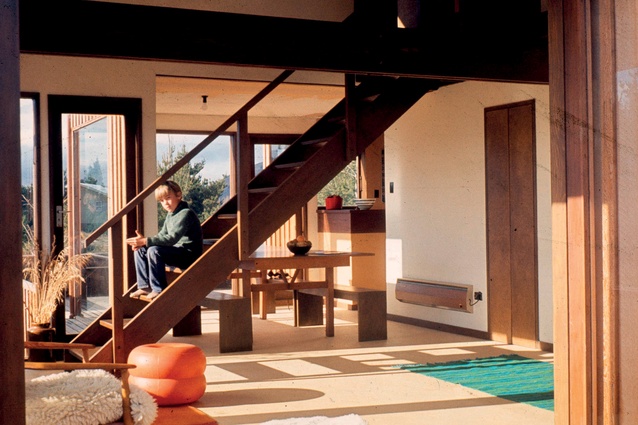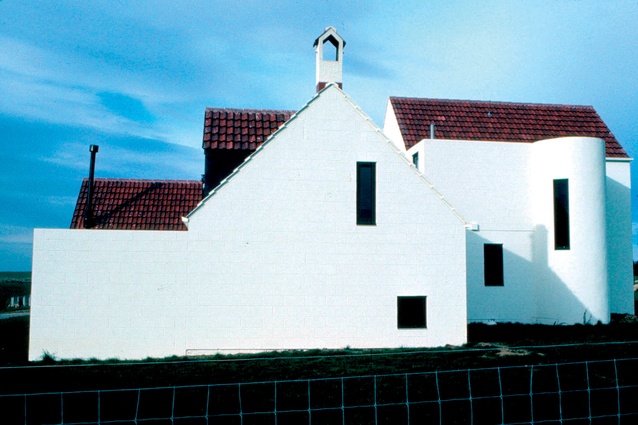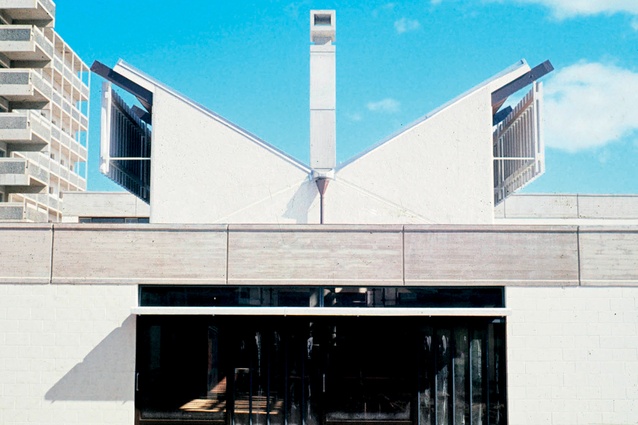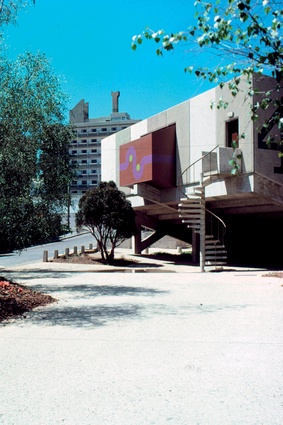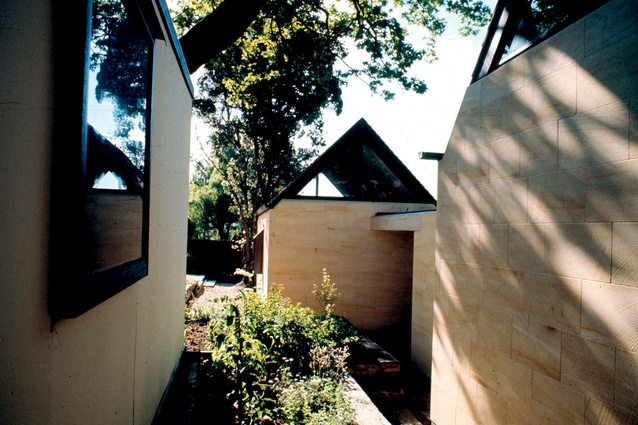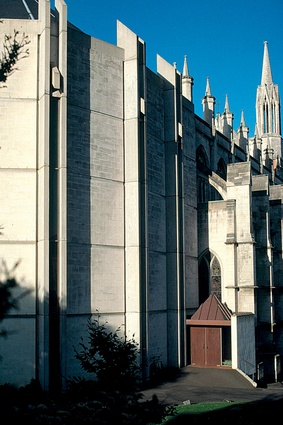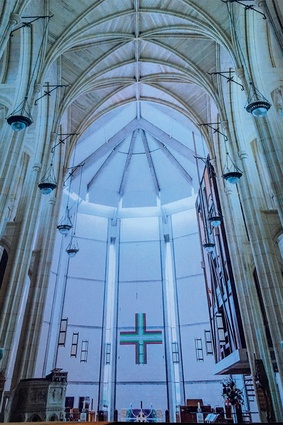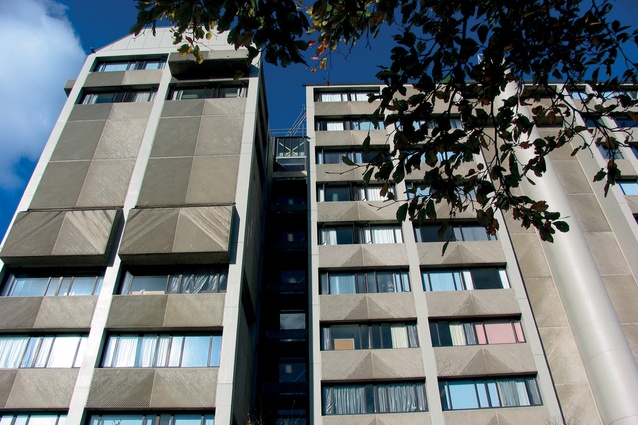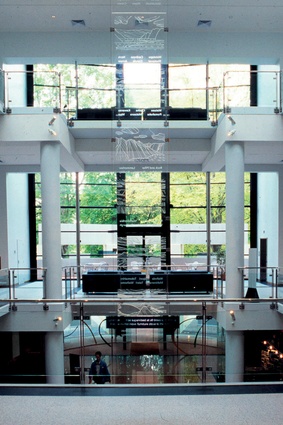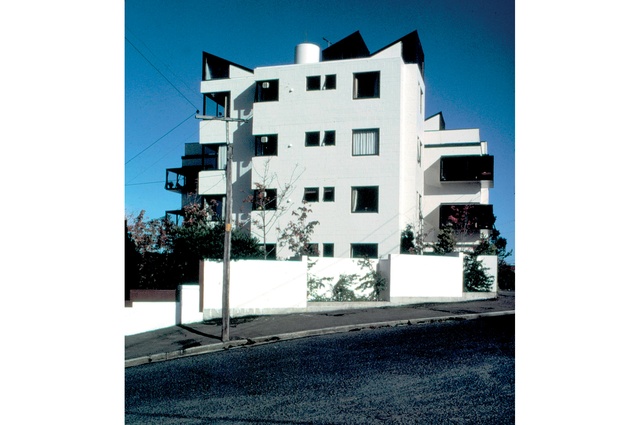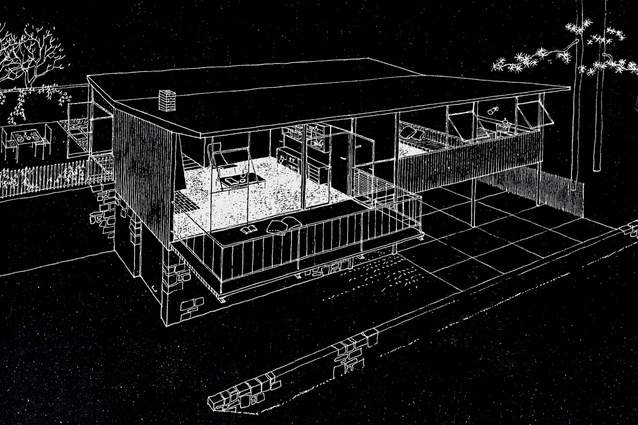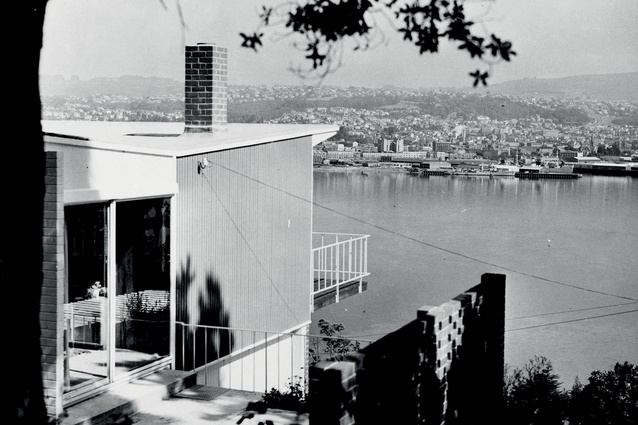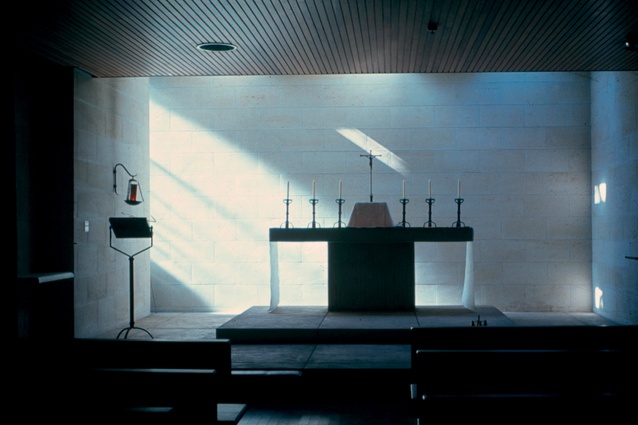Obituary: Edward John (Ted) McCoy
Marshall Cook honours NZIA Gold Medal-winning architect Ted McCoy, who spent most of his working life designing buildings in and around Dunedin.
Ted McCoy (23 Febraury 1925 – 17 January 2018) was past national president of the New Zealand Institute of Architects, Gold Medal recipient, Officer of the New Zealand Order of Merit, Fellow of the NZIA, Honorary Fellow of the Royal Canadian Institute of Architects and Fellow of the Royal Society of Arts (London). His skills were widely recognised and tautly honed throughout his whole, seemingly endless, working life.
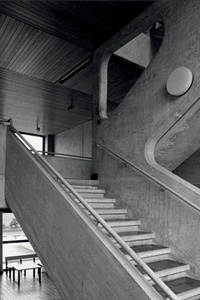
Born in Dunedin in 1925, the middle child of five siblings, he excelled at high school and, later, graduated with a bachelor’s degree from the Auckland University College School of Architecture in 1949.
Early influences were the 1950s’ Californian architecture of Drake, Esherick, Wurster and the Case Study movement but, mostly, he respected the climate-driven Scandinavians and early Wright.
Discovering Lutyens through Christopher Hussey’s outstanding book encouraged Ted to look again at the Victorian and Edwardian architects of early Dunedin. He bonded with the Scottish roots of the city; he loved Dunedin and Dunedin loved him and, over the next 50 years, he skilfully manipulated the fabric of the city to enable it to slip gently into this century. Led by Ted, artists were encouraged to participate in the architectural design process and to validate their essential role in the city’s optimistic future.
Ted started his practice within a year of graduation and was immediately thrust into the world of high-performance pressure with the commission to design Aquinas Hall, a residential hostel which was later to receive a Gold Medal design award from the NZIA. The pure bravado of the exercise challenged the status quo and became the backbone of the future practice. The firm seemed to arrive on the scene from nowhere as part of a new urban architectural turning point that included John Scott’s Futuna following Le Corbusier’s Ronchamp.
Buildings like St Paul’s High School and, later, Otago Boys’ High School had that contradictory honest simplicity and poetic richness that infused his work. The use of light in his churches, with its hidden source of moving shadows, contributes greatly to the enhancement of invisible mysteries.
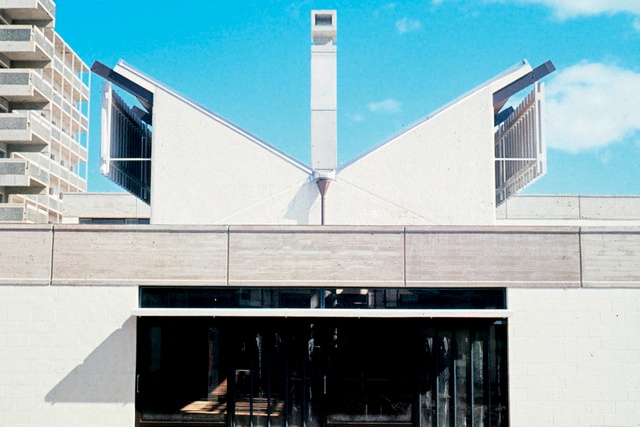
The ability of Ted to spar with the historical is most uncompromising in the sanctuary of St Paul’s Cathedral. The heart-stopping wash of light across the encapsulated Oamaru stone around the altar and the elegant fair-faced concrete support pillars have their origins in the 1917 Gothic Revival architecture. Referenced but not copied, the character of the historical runs parallel to the new, ensuring acceptance by contemporary congregations.
Ted’s knowledgeable interest in and respect for Dunedin’s historical past led to his role as chairman of the Otago Historical Trust regional committee and the national board of the New Zealand Historic Places Trust. This culminated in his collaboration with photographer Gary Blackman in the publication of the book Victorian City of New Zealand, which showcased some of Ted’s photographic skills and his acute eye for detail. He was a contributing author of Historic Buildings of New Zealand: South Island and the author of the book A Southern Architecture: The Work of Ted McCoy, the contents of which provide a window into his architectural soul.
The fusion of modernist design and traditional materials is most obvious in the extensive educational works orchestrated by Ted. Brick, stone and cast concrete at Otago Boys’ High and the carefully striated concrete of the Hocken Building with its faux slate roof have become clear statements of a recognisable regional style based on fitting in rather than borrowed from.
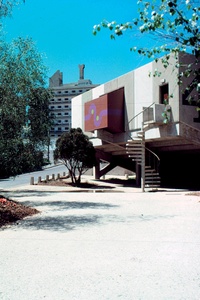
After 17 years as a sole practitioner and a tireless worker, Ted was joined by Peter Wixon as a practice partner in what was to become one of New Zealand’s most successful architectural design firms, McCoy Wixon Architects.
The national importance of the firm is recognised by the great variety of government and institutional commissions. These include humble Post Offices, the Chancery for the New Zealand High Commission in Papua New Guinea, the unbuilt High Commissioner’s house in Canberra and the potential New National Art Gallery project that later became Te Papa.
In preparation for the New National Art Gallery, Ted visited most of the contemporary and established galleries throughout the world and remained a staunch believer in the importance of art to the community. The Otago Museum redevelopment gave him the opportunity to display his belief in the value of art by the inclusion of artist Marilynn Webb’s dramatic suspended Journey from the Coast, which welcomes the visitor and stimulates response.
The firm has been awarded eight national NZIA design awards underpinned by 20 Otago regional awards and Ted’s life’s work has been honoured by the profession with the naming of the prestigious Ted McCoy Award for Education. The University of Otago presented him with an honorary doctorate of laws in recognition of his commitment to the heritage buildings of Dunedin and his outstanding architecture.
More than 150 of his singularly recognisable houses are spread throughout New Zealand, some unperturbed in the most dramatic of landscapes, others snuggling up to their suburban neighbours.
Characterised by a base of solid permanence and delicate ephemerality, they sit comfortably on this earth, complementing the forces of nature.
Six years into their marriage and with an expanding family, he and his wife, Nola, designed and had built their own house at Vauxhall in Dunedin’s inner suburbs. A mixture of local brickwork and delicate joinery, the house carries its stature to this day. The 1971 McCoy family crib in Wanaka pays homage to the Californian architects that so fascinated the younger Ted.
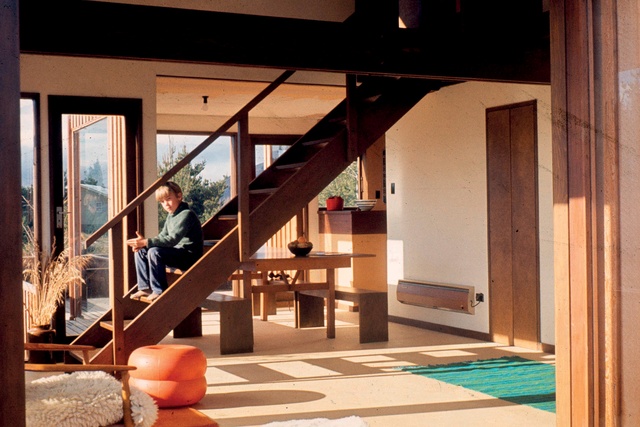
Designed for informal family activities over five levels, it challenged the perception of the traditional holiday house with its logical, child-driven layout. In contrast, the neighbouring Walker House is a response to the same regional climatic conditions but is more formal in its tussock-coloured Oamaru stone, coloured plaster and all the trappings of modernism.
The main characteristic of this extensive portfolio of domestic buildings is that it allows the personalities of the clients to endow the projects, without the distillation of Ted’s high ideals. He was never critical of other architects’ work and gave generous praise and encouragement to those whose work he admired.
In this era, the volume and quality of work produced by the practice was unparalleled. Ted’s legacy is to urge us to look at our environment and pay homage to its beauty, and that the architect’s role is complementary and long lived. Four of Ted and Nola’s 13 children and one grandchild have become architects.
Ted died at home, aged 92, on 17 January 2018. He is survived by his wife Nola, two sons, 11 daughters, 20 grandchildren and 12 great-grandchildren.

